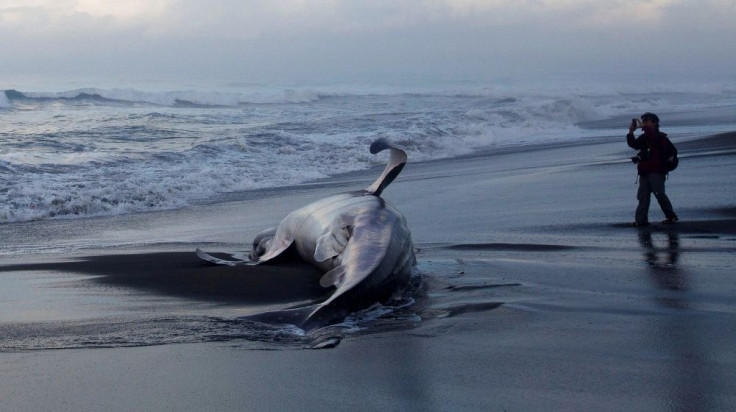14-Foot-Long Rare Oarfish Washed Up On A Californian Island Shore

A dead rare oarfish was found washed up on Catalina Island, the fifth to be seen on West Coast beaches in the past year, according to a report from National Geographic. According to the report, the dead fish was measured to be 14 feet or 4.3 metres.
Catalina Island Conservancy biologist Tyler Dvorak was the one who spotted the carcass while doing a bird survey on June 1. According to Dvorak, he immediately knew what the creature was because it was the same one that got washed up in the previous year.
Dvorak said the sighting was “pretty weird.” He contacted Los Angeles researchers who then travelled to the site to take samples of the huge fish.
David Chan, director of Pennington Marine Science Centre told NatGeo news that the fish could have been longer if it weren’t for its missing tail. Chan dissected the fish as future specimen for scientists to study on.
NatGeo reports that experts from the Natural History Museum in LA requested Chan to remove the fish’s stomach, head, organs and gonads that same day when the fish was discovered. This process should prevent scavenging as well as stop decomposition.
It was reported that Chan placed the parts in a freezer for a night until researchers came the next day to pick them up. According to him, the head will become a subject of study for scientists at the California State University Fullerton, or CSUF, while the Natural History Museum will take a look at DNA samples to see which species the fish belong to.
CSUF assistant professor of biology Misty Paig-Tran told Live Science that she will be working on the study of the fish’s bone structure, investigating the feeding mechanism of the creature. On the other hand, Paig-Tran’s colleague Kristy Forsgren, a physiologist at CSUF will take the ovaries, reportedly measured at 7 feet or 2 metres long and weighed 24 pounds or 11 kilogrammes.
It remains unclear why the oarfish got washed up on the shore, but according to Live Science, the National Oceanic and Atmospheric Administration, or NOAA, says these creatures show up on surface when they have an injury or if they’re dying.
To report problems or leave feedback on this article, email: wendylemeric@gmail.com.





















